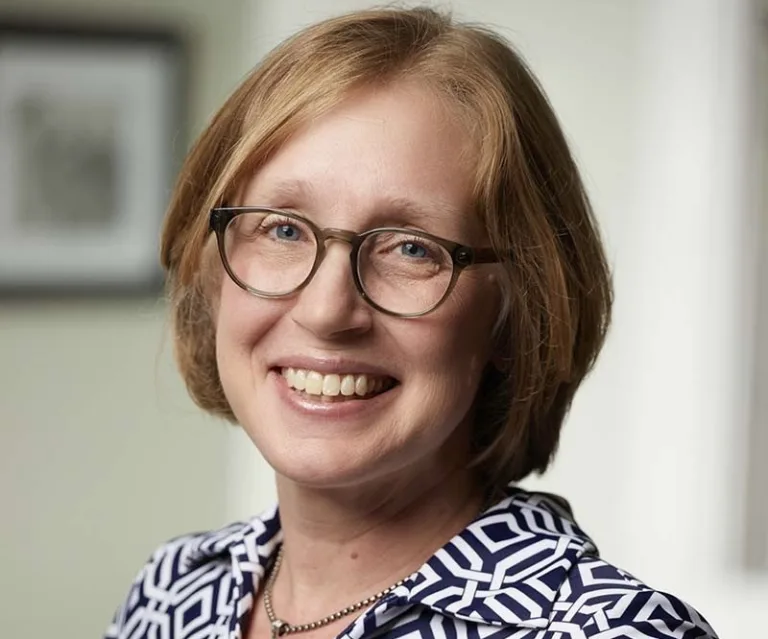
By Bob Giaquinto
At the September 25 meeting of the Retired Men’s Association Steve Myers introduced David Hawkins, who delivered a compelling presentation entitled “Meeting the Climate Challenge.” Hawkins emphasized three key points: the problem is real, it is serious, and we can do something about it. He began by illustrating the dramatic increase in atmospheric carbon dioxide concentrations since the Industrial Revolution, with levels rising from less than 280 parts per million to 421 parts per million in 2023. Hawkins explained that this increase in CO2, a heat-trapping gas, had led to a corresponding rise in global temperatures. While a 1.25°C increase above pre-industrial levels might seem small, he likened it to a fever in the human body, where a 10% increase would be severely detrimental.
The presentation then delved into the various manifestations of climate change. Heat waves have become more frequent and intense, with cities like Phoenix experiencing unprecedented streaks of high temperatures. In 2023, Phoenix had 30 consecutive days over 110°F, and in 2024, it endured 100 straight days above 100°F. Hawkins warned that these heat waves could be lethal, especially when combined with power outages, which were also on the rise. Wildfires, started by humans and lightning strikes, are another consequence of climate change. Hawkins explained that increased precipitation led to forest growth, followed by periods of drought that turned these larger forests into tinderboxes. When fires started, they occurred in hotter, drier conditions with more fuel, making them increasingly difficult to control. The impact of these fires extended far beyond the forests, as shown by the polluting smoke from Canadian wildfires reaching as far as Connecticut in June 2023.
Floods are becoming more frequent and severe, overwhelming systems designed for the climate of the previous century. Hawkins cited a recent flooding event in New York City where rainfall exceeded the capacity of the city’s drainage systems by just half an inch, causing significant disruption.
Storms are intensifying, even if their frequency hasn’t increased significantly. Hawkins referenced Hurricane Sandy in 2012 as an example of the damage these more powerful storms could cause. Sea level rise is another critical concern. Hawkins explained that this is due to both the expansion of oceans (warmer water expands) and the melting of land-based ice in places like Greenland and Antarctica. He presented a sobering projection of how a four-foot sea level rise would change coastal areas like Old Greenwich, Connecticut.
Drought is another “killer phenomenon” resulting from climate change. As more CO2 is released into the atmosphere, it disrupts weather patterns, leading to more frequent and intense drought events. Hawkins warned that this would particularly affect poorer regions of the world, even causing the migration of people to new areas in quest of a better life.
The presentation then shifted to the causes of climate change. The primary culprit is the burning of fossil fuels, which has increased dramatically since the Industrial Revolution. In 2023, the world emitted over 50.82 billion tons of greenhouse gases, compared to just 4.2 billion tons in 1850. Agriculture is another significant contributor, accounting for about 11% of U.S. greenhouse gas emissions. This came from methane gas produced by livestock, rice cultivation, and nitrous oxide gas from nitrogen-containing fertilizers.
Deforestation is also a major factor, with Hawkins revealing that the primary driver is not the forestry industry but beef production. About 40% of all forest clearing is due to raising cattle, which is very profitable, followed by food oils like soy and palm oil at 18%. Hawkins then discussed the contributions of different countries to climate change. While China currently led in annual emissions, followed by the United States and India, he emphasized that climate change was a cumulative problem. When looking at historical emissions since 1850, the United States remained the largest contributor, followed by Europe and then China.
The presenter addressed the question of what temperature increase should we aim to avoid. Hawkins noted that we are already experiencing effects at the current 1.25°C increase above pre-industrial levels, with projections suggesting potential increases of 3 to 5°C without action. Throughout his talk, Hawkins underscored the interconnected nature of climate change impacts and the need for global cooperation to address the issue. He stressed that while countries might debate their relative contributions and responsibilities, the reality is that we were all in this together and must find a way to work collectively on solutions.
The goal is to get to net zero. CO2 could still be released into the atmosphere, but the nations would have to pull an equal amount of CO2 from the air to result in net zero admissions. The 197 nations in the Paris Climate agreement know what has to be done, but the wording in the agreement is vague.
How do we get to net zero? David Hawkins gave his answers. Improve the energy efficiency of vehicles, power, buildings, and train systems. Increase clean energy from wind and solar, use improved battery storage to stockpile energy, utilize new geothermal technology by pumping water over the hot rocks of the Earth to produce heat and power. More nuclear power plants, more synthetic fuel which is produced from extracted CO2 from the air plus hydrogen into liquids and solids (could be a huge solution), plus other exciting, innovative methods of carbon capture. Improved agricultural methods to increase yield and decrease the use of nitrogen, continued increased usage of electrical and hybrid vehicles, producing green hydrogen which is better than making grey hydrogen, and more. Natural gas usage produces half the carbon emissions of coal. We all must reduce the use of fossil fuels, oil, coal and natural gas. Yes, the world can do something positive about climate change and many nations, including China, are doing so.
The talk can be viewed by going to the RMA website at https://greenwichrma.org, and clicking on “Speakers.”
The RMA’s upcoming presentation, “Innisfree: An American Garden,” by Laura Palmer, is scheduled for 11 AM on Wednesday, October 9, 2024. Join executive director Laura Palmer for a virtual tour of Innisfree Garden, a powerful icon of mid-twentieth-century design now recognized as one of the world’s ten best gardens and listed at the highest level—exceptional national significance—on the National Register of Historic Places. In a story that reads like the Great American Novel, Palmer will describe the people and ideas that shaped this living landmark, which is maintained by a remarkably small staff. Listeners will find inspiration for their own garden by exploring Innisfree’s timeless design strategies and nature-based maintenance practices.
Innisfree Garden is a 185-acre work of art designed over decades and nestled within a natural bowl that wraps around 40-acre Tyrrel Lake. The garden has a private, intimate feel. More than 20,000 visitors each year explore this quintessential American stroll garden, located in Millbrook, New York, just 90 miles north of New York City. www.innisfreegarden.org
Laura Palmer joined Innisfree in 2021 as its executive director. Before that, she was the executive director of the Berkshire International Film Festival. She spent most of her career at the Garden Conservancy as Vice President of Special Projects where she worked with hundreds of volunteers around the country to launch Open Days in 1995. Under her leadership, the program welcomed more than a million visitors into thousands of private gardens in 41 states around the country.
Before joining the Garden Conservancy, Palmer worked for several nonprofits, including the Brandywine Conservancy and Museum of Art in Chadds Ford, Pennsylvania, the Union of Concerned Scientists in Cambridge, Massachusetts, and The Event Company in Boulder, Colorado. Palmer is an enthusiastic gardener, a volunteer EMT, and a search and rescue trainee with her German Shepherd dog, Eva.
To stream the presentation by Laura Palmer at 11 AM on Wednesday, October 9, click on https://bit.ly/30IBj21. This presentation will also be available on local public access TV channels, Verizon FIOS channel 24 and Optimum (Cablevision) channel 79. The public is also invited to attend the presentation in person at the First Presbyterian Church of Greenwich at 1 West Putnam Avenue.
Note: The views expressed in these presentations are those of the speakers. They are not intended to represent the views of the RMA or its members.
RMA speaker presentations are presented as a community service at no cost to in-person or Zoom attendees, regardless of gender. Any member of the public who would like to receive a weekly email announcement of future speakers should send a request to members@greenwichrma.org. The RMA urges all eligible individuals to consider becoming a member of our great organization, and thereby enjoy all the available fellowship, volunteer, and community service opportunities which the RMA offers to its members. For further information, go to https://greenwichrma.org/, or contact members@greenwichrma.org.




